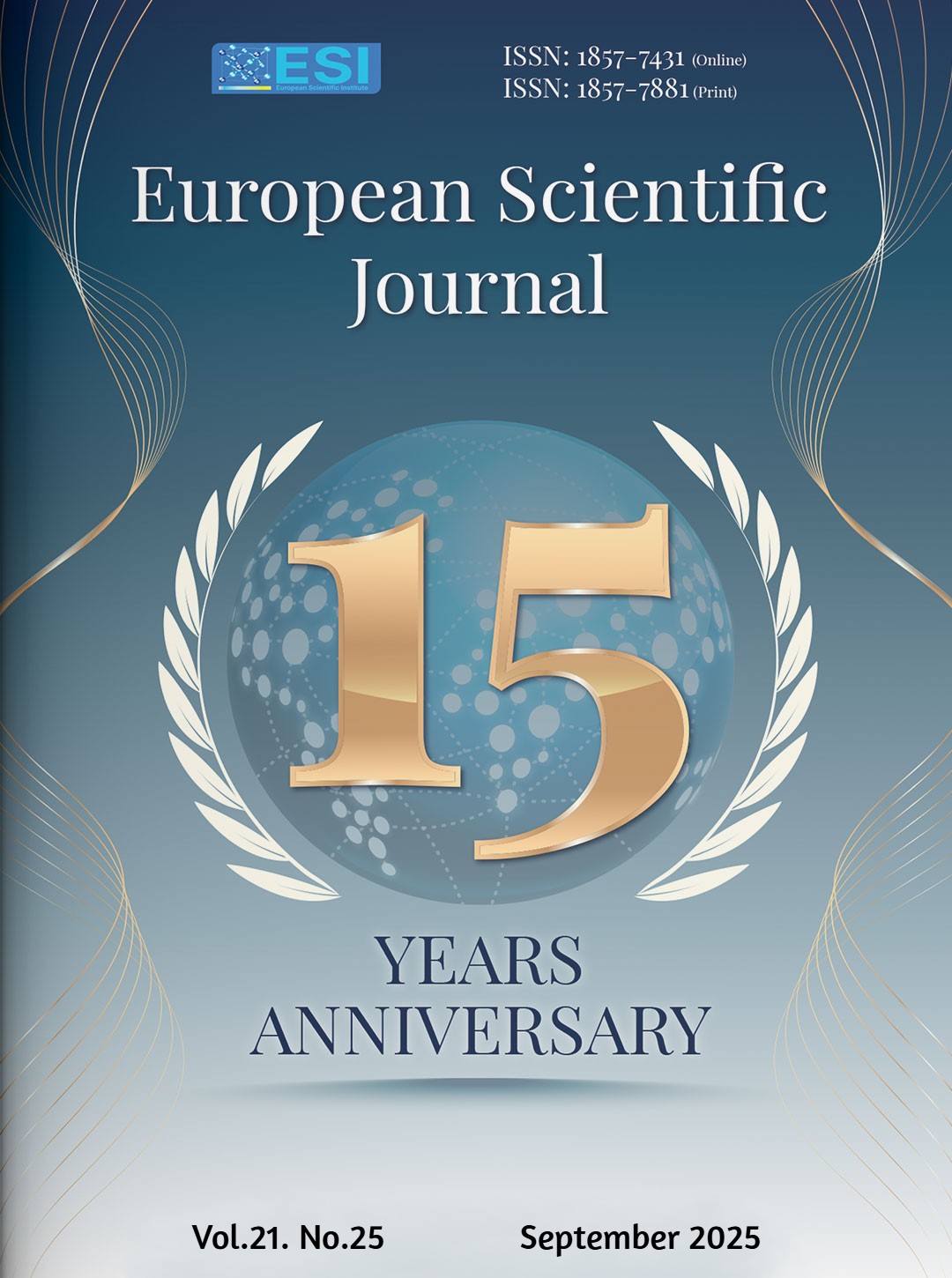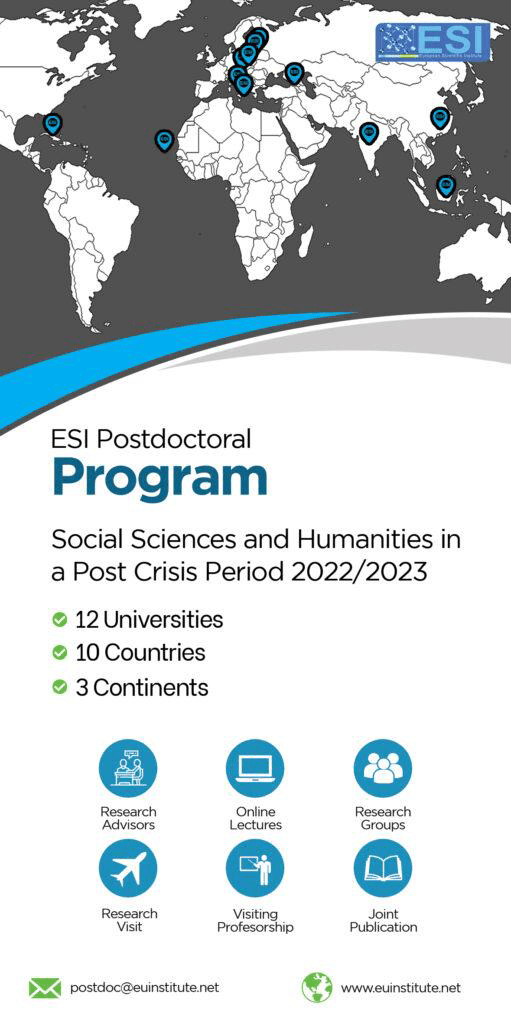Effect of Regional Integration on Intra-Regional Informal Agricultural Trade in West Africa
Abstract
This research analyzes the effect of regional integration on informal intra-regional agricultural trade in West Africa[1], based on an augmented gravity model, over the period 2010–2022. It assesses the significant impact of the Common External Tariff (CET) of the Economic Community of West African States (ECOWAS) and the gradual implementation of the African Continental Free Trade Area (AfCFTA) on informal agricultural trade among West African countries. The results reveal a significant correlation between these integration initiatives and a marked decline in informal agricultural trade, thereby raising crucial questions about the effective inclusion of these key actors within regional economic integration frameworks.
[1] In this research, West Africa is defined as the ECOWAS countries, excluding Cape Verde.
Downloads
Metrics
PlumX Statistics
References
2. Agbodji, A. E. (2007). Intégration et Échanges commerciaux Intra Sous-régionaux : Le Cas de l’UEMOA. Revue Africaine de l’Intégration, 1(1), 161–188.
3. Anderson, J. E. (1979). A Theoretical Foundation for the Gravity Equation. The American Economic Review, 69(1), 106–116.
4. Anderson, J. E., & van Wincoop, E. (2003). Gravity with Gravitas : A Solution to the Border Puzzle, American Economic Review, Vol. 93, pp. 170–92.
5. Bergstrand, J. H. (1985). The Gravity Equation in International Trade : Some Microeconomic Foundations and Empirical Evidence, Review of Economics and Statistic, Vol. 67, pp. 474–81.
6. Beke, T. E. (2022). Effets des coûts de commerce sur les échanges agricoles dans l’espace CEDEAO. Économie rurale. Agricultures, alimentations, territoires, 380, Article 380.
7. Beke, T. E., & N’Guessan, D.-D. M. (2021). Echanges agricoles intrarégionaux et sécurité alimentaire dans l’espace CEDEAO. Région et Développement, 54, 51–81.
8. Bouët, A., Cosnard, L., & Laborde, D. (2017). Measuring Trade Integration in Africa. Journal of Economic Integration, 32 (4), 937–977.
9. Carrère, C. (2013). UEMOA, CEMAC : Quelle performance en matière de commerce ? Revue d’économie du développement, 21(1), 33–60.
10. Carrère, C. (2004). African Regional Agreements: Impact on Trade with or without Currency Unions, Journal of African Economies, Vol.13, n° 2, 199-239.
11. Coulibaly, A. D., Traore, M. & Diarra, S. (2015). UEMOA versus CEDEAO : Analyse par le modèle de gravité des flux de commerce intra-communautaire, Document de réflexion, DR 2015.1, Commission de l’UEMOA.
12. CILSS, & FSIN. (2025). Rapport régional 2025 sur la sécurité alimentaire et nutritionnelle au Sahel et en Afrique de l’Ouest (pp. 1–81).
13. CNUCED. (2024). Rapport sur le développement économique en Afrique : Libérer le potentiel commercial de l’Afrique Stimuler les marchés régionaux et réduire les risques (pp. 1–180) [Version préliminaire].
14. Costinot, A., & Rodríguez-Clare, A. (2014). Trade theory with numbers: Quantifying the consequences of globalization. In G. Gopinath, E. Helpman, & K. Rogoff (Eds.), Handbook of International Economics (Vol. 4, pp. 197–261).
15. Deardorff, A. V. (1995). Determinants of Bilateral Trade : Does Gravity Work in a Neoclassical World ? The Regionalization of the World Economy, 7–32.
16. Diop, C. A. (2007). L’UEMOA et les perspectives d’une zone monétaire unique de la CEDEAO : les enseignements d’un modèle de gravité. Département Des Études Économiques et de La Monnaie de BECEAO.
17. Eaton, J., & Kortum, S. (2002). Technology, geography, and trade. Econometrica, 70(5), 1741–1779.
18. Evenett, S. J., & Keller W. (2002). On Theories Explaining the Success of the Gravity Equation, Journal of Political Economy, Vol. 110, No. 2, pp. 281–316.
19. Fustier, B. (2015). Les échanges commerciaux euro-méditerranéens : essain d’analyse structurale.
20. Gammadigbe, V. (2017). Integration Regionale et Commerce Agricole Bilateral en Afrique de L’ouest. African Development Review, 29(2), 147–162.
21. Gbetnkom, D., & Avom, D. (2005). INTÉGRATION PAR LE MARCHÉ : LE CAS DE L’UEMOA. Région et Développement, 22.2005(22), 85–103.
22. Head, K., & Mayer, T. (2013). Gravity equations : toolkit, cook book, work horse. In Hand book of International Economics. Vol. 4, forth coming. Amsterdam : Elsevier.
23. Hooper, P., & Kohlhagen S. (1978). The Effect of Exchange Rate Uncertainty on the Prices and Volume of International Trade, Journal of International Economics, Vol. 8, No. 4, pp. 483–511
24. Houssou, K. P. (2023). Effets des institutions sur le développement économique en Afrique Subsaharienne.
25. Kpemoua, P. (2023). Effets de la dynamique de l’intégration régionale sur le commerce bilatéral en Afrique de l’Ouest. African Scientific Journal, 100–134.
26. Longo, R., & Sekkat, K. (2004). Economic Obstacles to Expanding, World Development, 32, 8, 1309-1321
27. Melitz, M. J. (2003). The impact of trade on intra-industry reallocations and aggregate industry productivity. Econometrica, 71(6), 1695–1725.
28. Salazar-Xirinachs, J. M. (2002). Proliferation of sub-regional trade agreements and the Americas : an assessment of key analytical and policy issues. Journal of Asian Economics, 13 (2), 181-212.
29. Santos Silva, J. M. C., & Tenreyro, S. (2006). The log of gravity. The Review of Economics and Statistics, 88(4), 641–658.
30. Santos Silva, J. M. C., & Tenreyro, S. (2011). Further Simulation Evidence on the Performance of the Poisson Pseudo‐Maximum Likelihood Estimator, Economics Letters, Vol. 112, No. 2, pp. 220–22
31. Tinbergen, J. (1962). Shaping the World Economy : Suggestions for an International Economic Policy, Twentieth Century Fund, New York.
32. Viner, J. (1950). The Custom Union Issue, Carnegie Endowment for international Peace, New York.
Copyright (c) 2025 Kossi Ade Kligue, Koffi Yovo

This work is licensed under a Creative Commons Attribution 4.0 International License.








